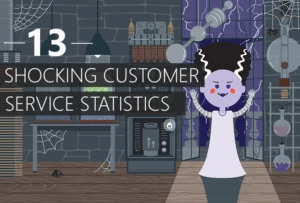
Would Your Brand Win the Customer Service Popular Vote?
In watching the coverage of the 2016 U.S. presidential race, some recent pre-election polling questions regarding public perception also seem to ring true for brands’ and organizations’ customer service and customer experience efforts.
A May 28 Quinnipiac national poll asked a sampling of American voters their current opinion about each announced 2016 presidential candidate using the following questions, filling in the blank with each candidate’s name:
- Is your opinion of _________ favorable, unfavorable or haven’t you heard enough about him/her?
- Would you say that __________ is honest and trustworthy, or not?
- Would you say that ___________ cares about the needs and problems of people like you?
If your customers were asked the same questions about your brand or organization’s customer service or overall customer experience, how would they answer?
While your organization may believe most customers would answer the above favorably, recent customer service and customer experience polls point to a perception disconnect between the brand and the customer:
Is your opinion of Brand X’s customer service favorable, unfavorable or haven’t you heard enough?
In a recent eConsultancy survey, 89% of brands gave themselves high marks saying they are satisfied or very satisfied in their ability to resolve customer conflicts that arise. But for customers, only 28% participating in the same survey felt their issues with a brand were dealt with very effectively – 41% felt the brands were somewhat ineffective or very ineffective in dealing with their issue.
Would you say that Brand X is honest and trustworthy, or not?
Honesty and trustworthiness are also seen as key to the customer in brand perception. In a 2014 Cohn & Wolfe The Age of Authenticity report surveying 12,000 consumers across 12 markets, noted traits including “communicates honestly about products and services” (91%) and “does not let its customers down” (91%) had far more value to consumers than “has a relevant and engaging story” (43%) and “brand popularity” (39%) which were at the very bottom of the list.
When asked what defined an authentic brand, some consumer responses included:
“An authentic company is honest, trustworthy and prepared to share all information about their products and business with the public.”
“An authentic company owns up to their mistakes and is honest with customers. Doesn’t sugar coat anything or sweep problems under the rug.”
A perception of authenticity, notes the report, translates into more than half of all respondents giving their loyalty to that company, saying that they would buy from that company over and above any competitors, and that they would recommend the brand to friends and family.
Would you say that Brand X cares about the need and problems of people like you?
In a recent Aspect Consumer Experience Survey, 76% of consumers surveyed view customer service as a true test of how much a company values them. Yet an SDL survey of nearly 3,000 indicates that 55% of consumers can’t remember a single recent customer service success.
A recent study by Bain & Company shows the brand and customer perception divide around the customer experience is more like a chasm, noting that while 80% of companies believe they are delivering a superior experience to their customers, only 8% of customers agree.
If an election were being held today based on customer service and experience, how would your brand or organization fair in the polls? Would it receive high marks or low approval ratings? It’s never too early (or too late) to stand out from the competition and make a run from dark horse to the winner of the popular vote.
————————
Watch the Webinar: Aligning the Customer Experience
from Brand Promise through Post-Sales Service
 In a recorded webinar, analyst Michael Krigsman discusses why companies need to become customer-focused, showing the weighting of promise, product, purchase and post-sales service when it comes to customer engagement, satisfaction and long-term brand loyalty.
In a recorded webinar, analyst Michael Krigsman discusses why companies need to become customer-focused, showing the weighting of promise, product, purchase and post-sales service when it comes to customer engagement, satisfaction and long-term brand loyalty.
Microsoft's Bill Patterson explores how the four Ps (promise, product, purchase and post-sales experience) come together and where customer service comes in. Bill and Michael provided examples of well-known brands that are laggards and leaders (those currently using productive, proactive post-sales service to amplify the brand promise, along with product and purchase success).
Quark Software Vice-President of IT and Customer Support, Mark Lawler, also joins the conversation to share how Quark is building its brand around and has doubled its Net Promoter Score through a strong investment in customer service and engagement.
Whether you’re representing a commercial brand, government agency, or growing public-facing organization, watch this free webinar at your convenience to find out where your organization currently stands in start-to-finish customer engagement and where all brands and organizations should be heading.


